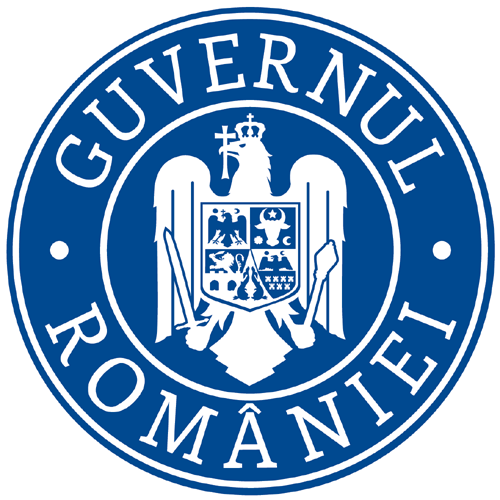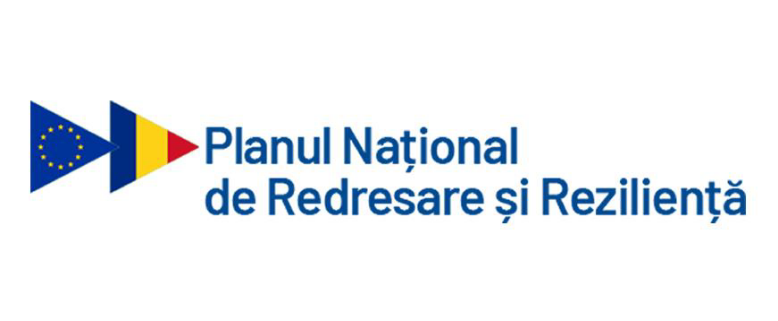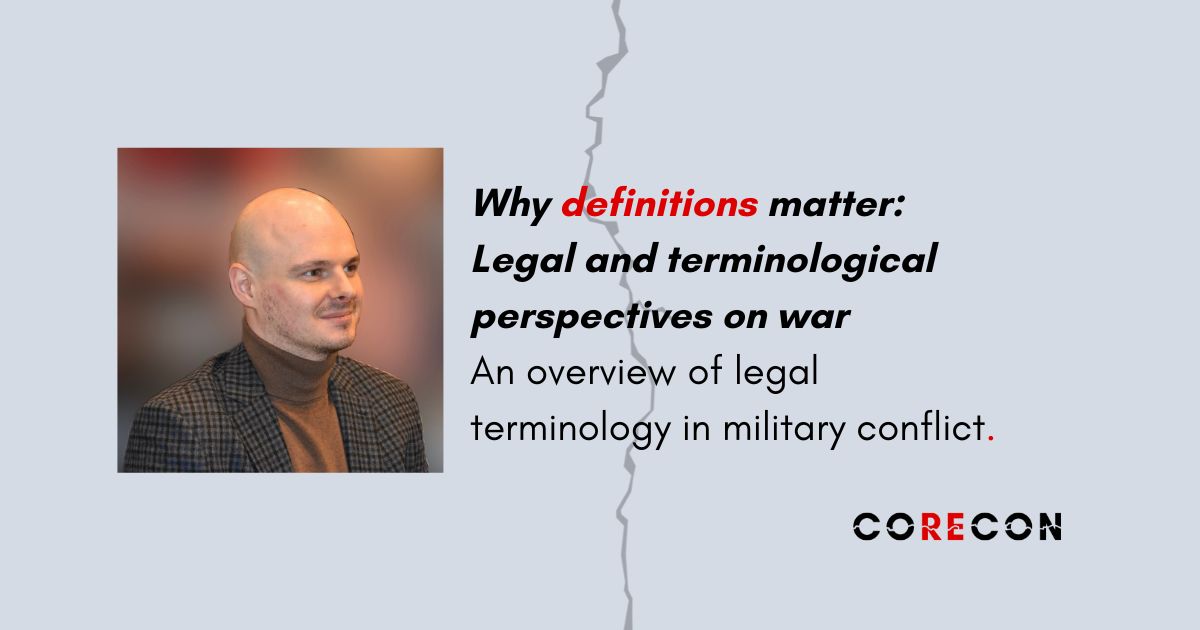Since CORECON explores the narratives, discourses, and interpretive frameworks that shape the public understanding of the Russian-Ukrainian conflict, this post looks at the terminological and legal dimensions of war. The way we define war is not only a matter of law but also of media framing and public reception. Concepts like “war,“ “armed conflict,“ “hostilities,“ “military operations,“ “aggression,“ and “martial law“ influence how states justify their actions, how international law is applied, and how the conflict is narrated to global audiences.
A short history of the law of war
Attempts to regulate war go back centuries. Medieval “just war” theory, influenced by thinkers such as Augustine and Aquinas, sought to distinguish between legitimate and illegitimate wars. In the early modern period, Grotius (1625) emphasized rules governing warfare between sovereign states, laying the groundwork for what would become international humanitarian law.
By the 19th and 20th centuries, the codification of war law accelerated: the Hague Conventions (1899, 1907) introduced rules on declarations of war, conduct of hostilities, and rights of neutral powers, while the Geneva Conventions (1864, revised 1949 and expanded with Additional Protocols in 1977) established core principles of humanitarian protection for combatants and civilians. Two foundational branches of international law emerged:
- Ius ad bellum (the right to war) that governs when and why states may resort to armed force. It addresses questions of justification, whether a war is legal, for example, in cases of self-defence under Article 51 of the UN Charter.
- Ius in bello (the law in war) that governs how wars are fought once they begin. It regulates conduct during hostilities, protecting civiliansand prisoners of war, and restricting the use of certain weapons and tactics.
This distinction remains crucial today: ius ad bellum asks “Is this war legal?”, while ius in bello asks “Are the parties fighting it legally?”
Why international law struggles to define war
Like everyday language, international law does not settle on one neat definition of war. Instead, it regulates the use of force through various norms like Article 2(4) of the UN Charter, which bans the use of threats or force against states. This rule has become a cornerstone of enforcing modern international law (ius cogens).
Ius cogens (Latin for “compelling law”) refers to peremptory norms; rules so fundamental that no state can legally violate or opt out of them. Unlike ordinary treaties, which states may agree to or withdraw from, ius cogens binds all states at all times. Examples include the prohibitions of aggressive war, genocide, slavery, and torture. These are considered the highest-ranking rules of international law, and any treaty or state act that contradicts them is void.
War has always been hard to pin down. Classic definitions, such as Oppenheim’s (1952) description of war as a contention between states’ armed forces, capture the formal picture but miss other realities like guerrilla wars, insurgencies, or “special operations.” For Hobbes, it was about insecurity and the constant threat of violence; for the Stockholm International Peace Research Institute, it is about quantifiable metrics, such as the number of battle-related deaths. Here, however, we focus on how international law defines war or, more accurately, how it avoids defining it directly by relying on a web of treaties, customary practices, and principles.
Declarations of war are rare today
Traditionally, wars began with a formal declaration of war. Under the Hague Convention III, that was a clear signal that states had moved from peace to the laws of war (ius in bello). Such declarations carried weight: activating humanitarian law, justifying neutrality violations, and formalizing diplomatic rifts. But in the 21st century, official declarations are rare. Georgia declared war on Russia in 2008, and Israel declared war on Hamas in 2023, but most modern conflicts bypass this formality.
Martial law: Emergency powers under scrutiny
Martial law is a domestic legal tool, but it does not escape international oversight. Human rights conventions (International Covenant on Civil and Political Rights, art. 4, European Convention on Human Rights, art. 15) allow states to derogate from certain rights during emergencies, but only if measures are temporary, proportionate, and overseen by civilians. Ukraine’s martial law illustrates how governments balance internal control with international scrutiny and how media report these measures as both a legal necessity and political messaging.
What counts as an “armed conflict”?
The Geneva Conventions (1949) sidestep the word “war” and instead use “armed conflict.” Importantly, an armed conflict exists even without a formal declaration. Two main types exist, namely when the states fight one another (International Armed Conflict), or when governments or armed groups fight other groups (Non-International Armed Conflict).
The Stockholm International Peace Research Institute adds another twist: if over 1,000 people die in a year, it is “war.” If fewer, it is an “armed conflict.”
Hostilities as a legal and discursive category
The term “hostilities” sounds less dramatic than “war,” but legally it refers to the actual acts of violence: attacks, sieges, bombardments. It contrasts with an armistice, when fighting stops temporarily, according to the Hague Convention IV. The International Committee of the Red Cross (2009) further expands the meaning of “hostilities” to cover any acts that weaken the enemy’s military capacity. Journalists often adopt this word to describe escalations without calling them “war,” shaping how audiences perceive the intensity of conflict.
Military operations: Strategy or euphemism?
Military operations include offensives, retreats, and maneuvers. International law requires combatants to distinguish between civilians and fighters and to minimize collateral damage (AP I, arts. 48 & 51). Yet, the phrase can also function as a euphemism. The Russia–Ukraine war, ongoing since 2014, has unfolded without formal declarations. Russia labels its invasion a “special military operation,” claiming self-defence under the UN Charter, while Ukraine has called it aggression and enacted martial law but avoided the word “war.” This shows how terminology is a battlefield in itself. Some world’s leaders choose to frame the conflict for domestic audiences, international law, and the global media to suit their interests.
Aggression and invasion as critical legal categories
If “hostilities” is soft language, “aggression” is the sharpest legal blade. Defined in the Rome Statute and UN resolutions, aggression covers invasion, bombardment, and blockades… and crucially, it assigns responsibility to leaders. United Nations General Assembly Resolution 3314 (1974) explicitly identifies invasion as aggression. Ukraine and international bodies such as the International Court of Justice and European Convention on Human Rights have repeatedly described Russia’s actions as “aggression“, though jurisdictional limits complicate prosecution. This illustrates the stakes: labeling something as “aggression” is not merely descriptive; it is accusatory, carrying implications of criminal liability.
Why terminology matters
Terms such as “war,” “armed conflict,” “hostilities,” or “martial law” are not just legal labels but instruments shaping perception. They frame legitimacy, responsibility, and international response. For CORECON, examining this language is crucial: the Russian-Ukrainian war unfolds both on the battlefield and in discourse. Media often echo state terminology (“special operation,” “hostilities,” “aggression”), influencing how audiences understand the conflict. By analyzing these terms, CORECON shows how language shapes law, narratives, and public reception.
Text by Rafał Krzysztof Matusiak
References
Geneva Conventions of 12 August 1949. International Committee of the Red Cross.
Grotius, H. (1625/2005). On the law of war and peace (De Jure Belli ac Pacis). (R. Tuck, Ed.). Liberty Fund. (Original work published 1625)
Hague Convention (III) relative to the Opening of Hostilities, October 18, 1907, 36 Stat. 2277, 205 Consol. T.S. 263.
Hague Convention (IV) respecting the Laws and Customs of War on Land, October 18, 1907, 36 Stat. 2277, 205 Consol. T.S. 277.
Hobbes, T. (1651/2012). Leviathan, or the matter, forme, & power of a common-wealth ecclesiasticall and civill. Cambridge University Press. (Original work published 1651)
International Committee of the Red Cross. (2009). Interpretive guidance on the notion of direct participation in hostilities under international humanitarian law. ICRC.
Oppenheim, L. (1952). International law: A treatise. Vol. II: Disputes, war and neutrality (H. Lauterpacht, Ed., 7th ed.). Longmans, Green and Co.
Protocol Additional to the Geneva Conventions of 12 August 1949, and relating to the Protection of Victims of International Armed Conflicts (Protocol I), June 8, 1977, 1125 U.N.T.S. 3.
Rome Statute of the International Criminal Court, July 17, 1998, 2187 U.N.T.S. 90.
Stockholm International Peace Research Institute (SIPRI). (2005). SIPRI yearbook 2005: Armaments, disarmament and international security. Oxford University Press.
United Nations General Assembly. (1974). Definition of Aggression (UNGA Resolution 3314, XXIX).





